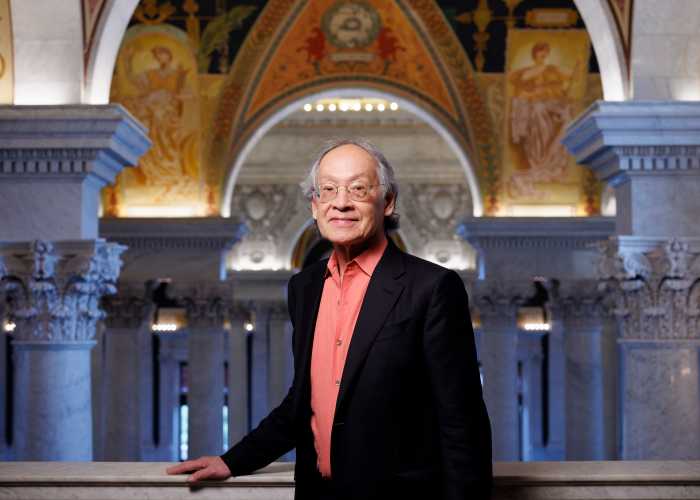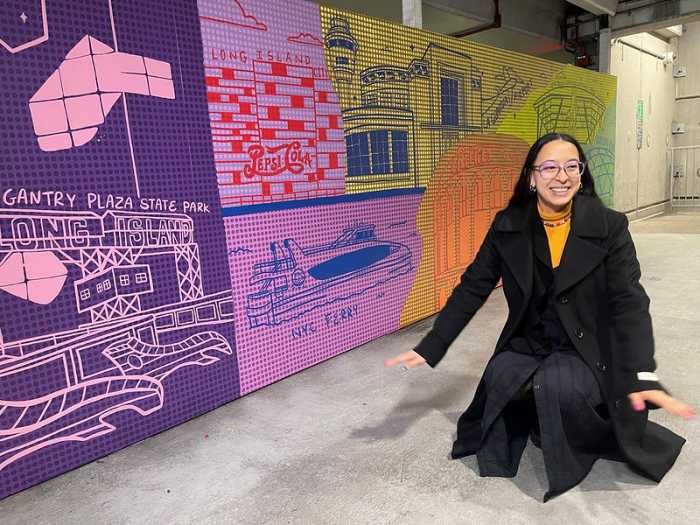Our view of art tends to be restricted to the work residing within the frame. The artist decides to start or stop at a certain point, and the audience must find meaning somewhere within that – and that alone.
This is the conventional way in which the world views art. But of course, artists will view art in their own way. With the gears in their brain turning, many artists see beyond the frame and into a reality that dwells somewhere on the fine line between abstraction and figurativism.
Jorge Posada is a painter, sculptor, printmaker and photographer working out of a studio in LIC since 1997. The Columbian native first came to the U.S. in 1984 and was merely passing through New York on his way to Paris. But there was something about the city that hooked him almost immediately. He found a kinship with the artist community and a base to create his art.
“I found friends here who were all from the art world. These were friends I didn’t even know I had. And all of a sudden, I got the idea to stay here,” said Posada, who initially lived in Woodside, but now lives in Hell’s Kitchen. “Everything you need to learn about the art world, you can learn in New York. The support system here is the reason to stay.”
Deciding to stay in New York, and work in LIC, has given Posada a front row view of the many changes that have swept the western Queens landscape. The biggest change he’s seen is in the demographics of the area, as LIC’s population has gone from warehouse workers hauling cement to young parents pushing baby strollers.
Some of his favorite places have disappeared, with new high rises sprouting up in their place. He’s not sure if it’s for better or worse yet, but he believes the old and the new can coexist in harmony.
“I don’t want the character of the area to get lost,” he said. “The new buildings should coexist with the industrial area and the neighborhood houses.”
The old mingling with the new – this is a subject very prevalent in Posada’s life. His current focus, a project he dubbed “Fragmenting Rubens,” takes the work of artist Peter Paul Rubens and goes beyond the frame. Here, Posada delves deeply into an invisible world rich with potential. In order to achieve this, the artist needed to see the original work firsthand.
Posada made his first visit to Antwerp, Belgium in 2004. Its cathedral hosts two masterpieces by Rubens, which are shown at both sides of the altar: The Raising and the Decent from the Cross. Since that first visit, Posada has been extensively sketching those two altarpieces. He felt transported by the uniqueness of the work and was moved to create work on his own.
After many hours of observation and study of Rubens’ work, he made numerous sketches in order to understand the structure, the composition and the drama contained in their pictorial space. Then he decided to launch himself into a very challenging project: to give his own interpretation and deconstruction of those paintings.
The pieces are both abstract and figurative, as the image of the human body contorts around the light and the dark with colors surrounding, bringing life and movement to the work.
“The body is a communication device. It is able to express feelings of happiness, sadness, depression and joy. It is full of movements and expression. It is alive and it dances,” he said. “This body is the only one we will have our entire life. When the body is violated in any way, it is an invasion of the only sacred possession we have.”
Posada’s sacred body of work, while highly involved, does not necessarily adhere to a strict schedule. He never follows any set schedule to be creative – he finds that impossible. He arrives in his LIC studio around 10 a.m., gets comfortable and basically just “hangs out” with the work until something strikes him – though sometimes he has to leave the studio in order to coax that strike.
“I always carry a sketchbook, and if I have an idea or a burst of inspiration, I throw it down in a fast and simple way,” he said. “An artist’s job is not just to paint. One must understand the continuous process of painting. The point isn’t to know when the painting is finished … the point is to stop.”
Posada said that if he doesn’t stop himself, he could potentially paint the same piece forever.
“That is so dangerous,” he said. “You can work on one piece so much that you end up hating it. If I’m having trouble with a piece, I leave it alone. I cover it for two or three weeks and then I go back and look at it with fresh eyes. Sometimes that is when I know a piece is truly finished.”
Considering himself a draftsman at heart, Posada relishes the opportunity to fill his sketchbook with ideas and musings, regardless if the sketches ever actually pan out into anything usable. That is of small consequence to Posada – he will paint and he will create because it is his life.
“I disconnect from everything when I create,” he said. “Art is very vital to me. It is like breathing. It moves me to clarify what I want to say. And it is necessary to explain myself and find ways to do it.”
Any art reviewer on the receiving end of one of Posada’s “explanations” need not see eye to eye with the artist. As he doesn’t always like every corner of other works, he doesn’t expect every audience to grab hold and be inspired by what he presents to them.
“You can’t make people feel something, but the hope is that they find some kind of connection in the frame of my feelings,” he said. “Maybe they don’t feel what I felt, maybe they feel something else. That’s ok. I want them to feel something, but first I want them to question.”
Ever-evolving, Posada is constantly on the search for new ways to approach art and life. And in order to do that, to move beyond the frame, he believes questioning the self is the only way.
“To question the self is what is most important,” he said. “When you question, you are evolving.”
Check out Posada’s work at www.posadastudiogallery.blogspot.com.







































